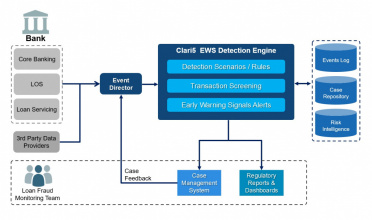Silent Divorce: How To Spot The Early Warning Signals

Table of Contents
Emotional Distance and Withdrawal
One of the most prominent signs of a silent divorce is a growing emotional distance and withdrawal from your partner. This manifests in several ways, often subtly at first, making it difficult to recognize.
Decreased Physical Intimacy
The decline in physical affection is a significant indicator of a silent divorce. This isn't just about sex; it encompasses all forms of physical touch and closeness. Look for these warning signs:
- Reduced sexual activity or complete absence: A sharp decrease or complete cessation of sexual intimacy often signals deeper underlying issues.
- Less physical touch (hugging, cuddling, hand-holding): The simple, everyday acts of physical affection diminish as emotional distance grows.
- Sleeping in separate beds or rooms: This physical separation reflects an emotional distance that needs addressing.
Lack of Emotional Connection
Beyond physical intimacy, a lack of emotional connection is a critical sign. You might notice:
- Fewer meaningful conversations: Conversations become superficial, avoiding deeper discussions about feelings and concerns.
- Reduced shared activities and interests: Couples once sharing hobbies and interests find themselves drifting apart, spending less time together.
- Feeling emotionally disconnected and alone: Despite being in a relationship, you feel emotionally isolated and unsupported by your partner.
- Avoiding eye contact: A lack of eye contact during conversations often indicates a lack of engagement and emotional connection.
- Difficulty communicating feelings and needs: Open and honest communication becomes challenging, leading to misunderstandings and resentment.
Communication Breakdown and Avoidance
Effective communication is the cornerstone of any healthy relationship. When communication breaks down, it's a major red flag, often a hallmark of a silent divorce.
Avoiding Difficult Conversations
Avoiding conflict might seem like a peaceful approach, but it's often a symptom of deeper problems. Watch out for:
- Ignoring or dismissing partner's concerns: Dismissing your partner's feelings and concerns creates resentment and further emotional distance.
- Refusing to discuss important issues: Avoiding crucial conversations prevents the resolution of problems and allows resentment to fester.
- Stonewalling during disagreements: Shutting down and refusing to engage in constructive dialogue prevents any resolution.
Increased Conflict Avoidance
The avoidance of conflict itself becomes a pattern, harming the relationship's health.
- Choosing to stay silent instead of communicating: Silence becomes a weapon, preventing open communication and creating further distance.
- Withdrawing from conversations instead of engaging: Instead of trying to resolve issues, you withdraw emotionally and physically.
- Avoiding spending time together to prevent disagreements: Avoiding each other altogether becomes the preferred solution, further exacerbating the problem.
Changes in Shared Responsibilities and Routine
A silent divorce often manifests in changes to shared responsibilities and daily routines. These shifts can be subtle but significant.
Shifting Household Responsibilities
The distribution of household chores and responsibilities can indicate a growing disconnect. Consider:
- One partner taking on more responsibility without discussion: An unequal distribution of tasks can lead to resentment and further distance.
- Neglect of shared household duties: A decline in maintaining the home reflects a lack of shared responsibility and a decrease in teamwork.
- Lack of cooperation in maintaining the home: Tasks that were once shared become the responsibility of one partner, creating imbalance and frustration.
Changes in Shared Activities
Shared activities and hobbies are often the first casualties of a silent divorce.
- Stopping shared hobbies or interests: Activities that once brought joy and connection are abandoned.
- Spending less time together: Quality time together diminishes, and couples find themselves leading separate lives.
- Avoiding family outings or social events: Shared social activities that strengthened bonds are replaced with isolation.
Seeking External Validation and Support
When a relationship falters, some individuals seek validation and support outside the marriage.
Increased Reliance on External Sources
This can be a clear sign that something is wrong within the relationship:
- Spending more time with friends or family at the expense of the spouse: Seeking comfort and connection elsewhere signals a lack of fulfillment in the marriage.
- Seeking emotional support from others outside the marriage: Turning to others for emotional needs highlights a lack of support within the marriage.
- Increased social media activity to seek attention: Using social media to gain validation demonstrates a lack of fulfillment in the relationship.
Hiding Financial Information
Financial secrecy is a serious warning sign, often indicating a hidden agenda.
- Opening secret bank accounts: This secretive behavior suggests a lack of trust and transparency.
- Hiding financial information from the spouse: A lack of financial openness is often linked to a growing emotional distance.
- Making major financial decisions without discussion: Significant financial decisions made unilaterally signal a breakdown in communication and partnership.
Conclusion
Recognizing the warning signs of a silent divorce – emotional distance, communication breakdown, changes in shared responsibilities, and seeking external validation – is the first step toward addressing the issues. Don't let a silent divorce destroy your marriage. If you recognize these warning signs, take action today. Open communication and seeking professional help (marriage counseling) are crucial steps to revitalizing your relationship and preventing a silent divorce. Learn more about recognizing and addressing the signs of a silent divorce by [linking to a relevant resource or further reading].

Featured Posts
-
 Where To Buy 2025 New York Yankees Hats Jerseys And Gear Your Ultimate Guide
Apr 28, 2025
Where To Buy 2025 New York Yankees Hats Jerseys And Gear Your Ultimate Guide
Apr 28, 2025 -
 Laid Off Federal Workers Finding State And Local Jobs The Challenges And Realities
Apr 28, 2025
Laid Off Federal Workers Finding State And Local Jobs The Challenges And Realities
Apr 28, 2025 -
 Red Sox Offseason Strategy Addressing The O Neill Departure In 2025
Apr 28, 2025
Red Sox Offseason Strategy Addressing The O Neill Departure In 2025
Apr 28, 2025 -
 Cassidy Hubbarth Receives Moving Tribute From Espn Colleagues
Apr 28, 2025
Cassidy Hubbarth Receives Moving Tribute From Espn Colleagues
Apr 28, 2025 -
 Resistance Grows Car Dealerships Push Back Against Ev Mandate
Apr 28, 2025
Resistance Grows Car Dealerships Push Back Against Ev Mandate
Apr 28, 2025
